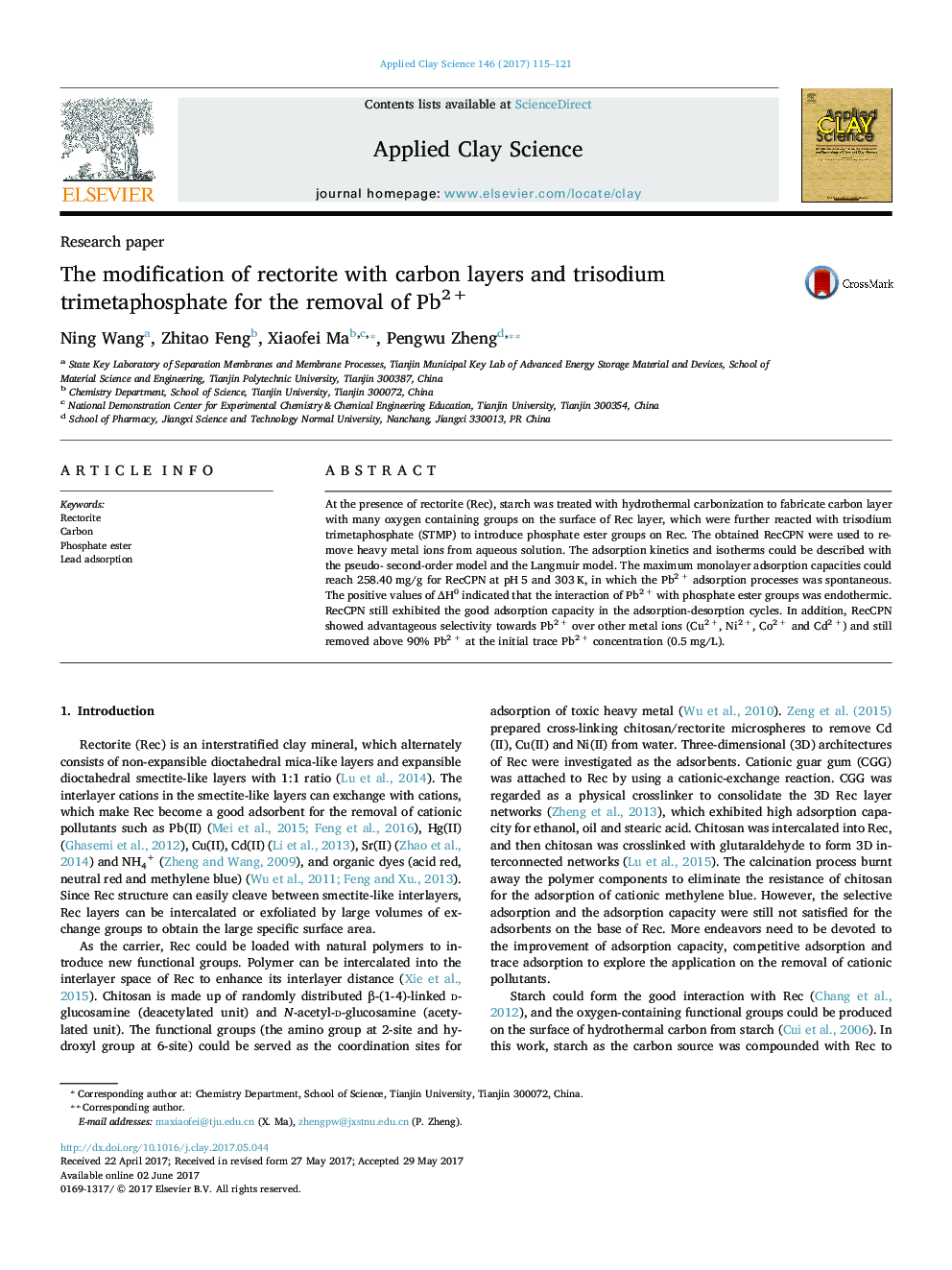| Article ID | Journal | Published Year | Pages | File Type |
|---|---|---|---|---|
| 5468834 | Applied Clay Science | 2017 | 7 Pages |
â¢Carbon layer with oxygen containing groups formed on REC layers.â¢RECC reacted with STMP to introduce phosphate ester groups.â¢The adsorption process of Pb2 + was investigated.â¢Phosphate ester groups contributed to the Pb2 + advantageous selectivity and trace Pb2 + removal.
At the presence of rectorite (Rec), starch was treated with hydrothermal carbonization to fabricate carbon layer with many oxygen containing groups on the surface of Rec layer, which were further reacted with trisodium trimetaphosphate (STMP) to introduce phosphate ester groups on Rec. The obtained RecCPN were used to remove heavy metal ions from aqueous solution. The adsorption kinetics and isotherms could be described with the pseudo- second-order model and the Langmuir model. The maximum monolayer adsorption capacities could reach 258.40Â mg/g for RecCPN at pHÂ 5 and 303Â K, in which the Pb2Â + adsorption processes was spontaneous. The positive values of ÎH0 indicated that the interaction of Pb2Â + with phosphate ester groups was endothermic. RecCPN still exhibited the good adsorption capacity in the adsorption-desorption cycles. In addition, RecCPN showed advantageous selectivity towards Pb2Â + over other metal ions (Cu2Â +, Ni2Â +, Co2Â + and Cd2Â +) and still removed above 90% Pb2Â + at the initial trace Pb2Â + concentration (0.5Â mg/L).
